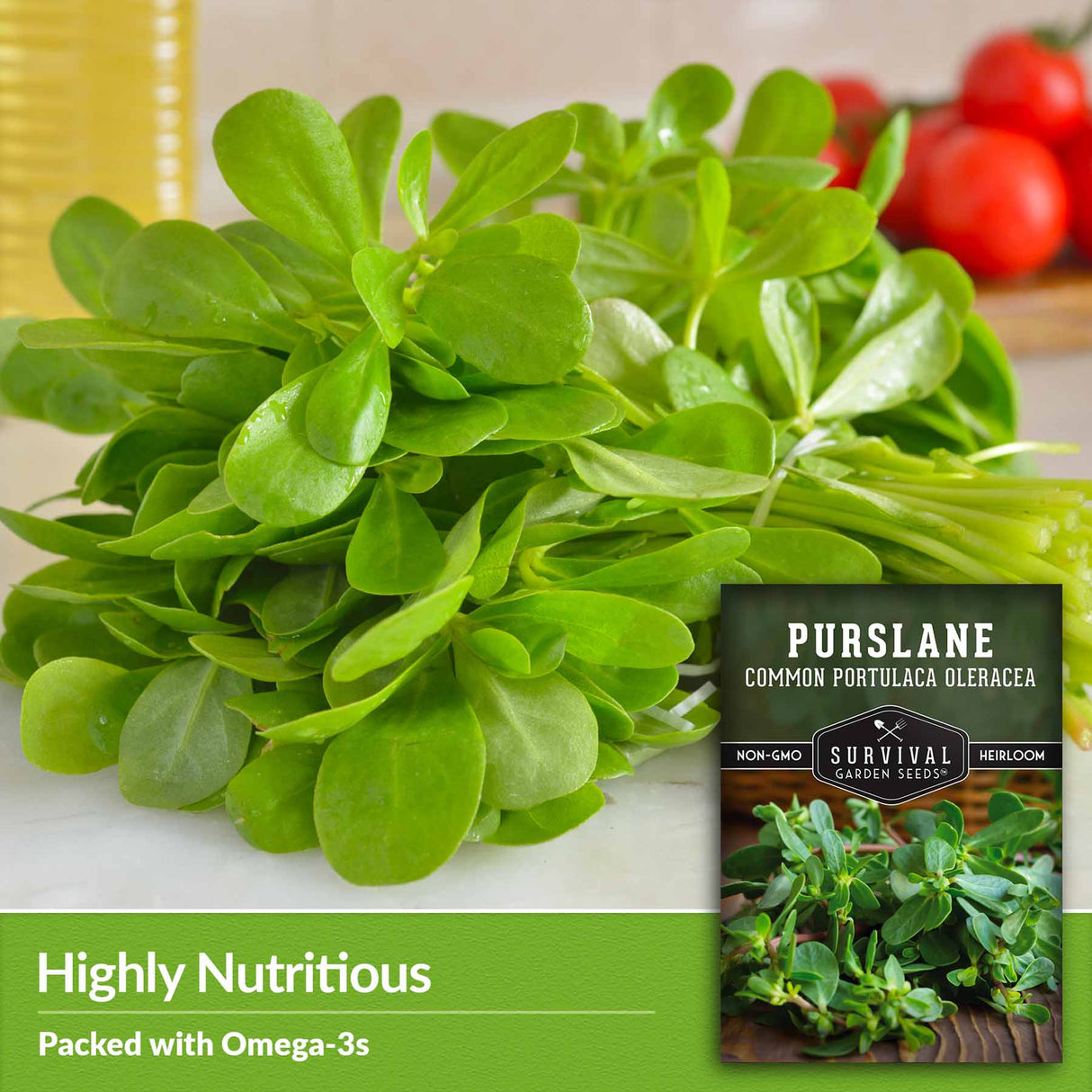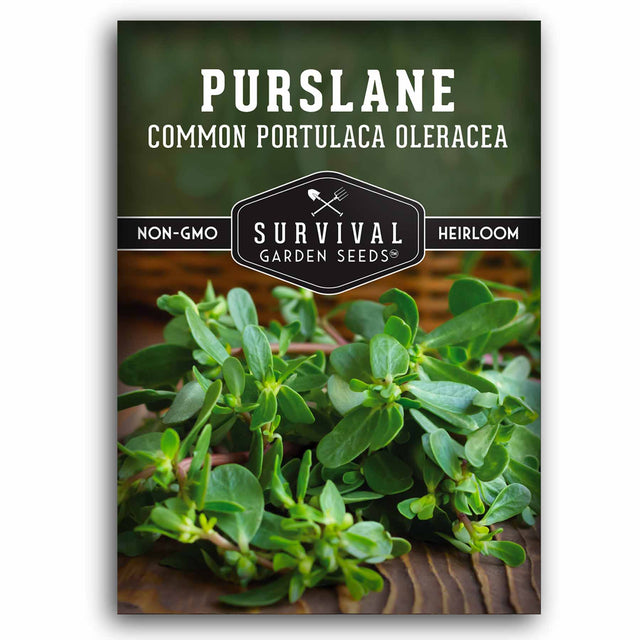Purslane Seeds – Heirloom Verdolagas, Nutritious Summer Green
Heirloom - Non-GMO - Reliable Germination
Purslane Seeds – Heirloom Verdolagas, Nutritious Summer Green - 1 Packet is backordered and will ship as soon as it is back in stock.
Grow purslane, the tangy, nutrient-packed green loved worldwide. Hardy, heat-loving, and easy to grow, it keeps your family nourished all summer.
Why Grow This Variety
Purslane (Portulaca oleracea), also called verdolagas, is a beloved heirloom green with a bright, lemony flavor. Rich in natural omega-3s, vitamins, and minerals, it’s a powerful superfood that brings fresh nutrition to your table. From salads and tacos to soups and sautés, purslane adds zest and nourishment when you need it most. Its resilience makes it an excellent staple for families seeking dependable summer greens.
- Nutrient-Rich Superfood – Naturally high in omega-3s, vitamins, and minerals for healthy meals.
- Thrives in Summer Heat – Stays crisp and green when other vegetables fade.
- Versatile in the Kitchen – Enjoy fresh in salads, tacos, or sautéed for a citrusy kick.
- Easy & Low-Maintenance – Grows quickly, tolerates poor soil, and loves hot, dry weather.
- Pollinator-Friendly Ground Cover – Spreads as a living mulch, suppressing weeds and feeding bees.
How to Grow
Direct sow purslane once the soil warms in late spring, or start seeds indoors 2–3 weeks before your last frost. Press seeds gently into the soil surface and keep moist until sprouted. Purslane thrives in full sun, tolerates poor soils, and shines in hot, dry weather when other greens wither. Baby leaves are ready in just 30–40 days, with cut-and-come-again harvests all season. Its spreading habit creates a natural living mulch that shades soil, suppresses weeds, and attracts pollinators with cheerful yellow blossoms.
Net Wt. 1G
Heirloom Vegetable Seeds
All of our seeds are open-pollinated, non-GMO, heirloom varieties with tested germination rates
Specifications
Specifications
-
Botanical Name
-
Planting Zones
-
Light
-
Soil Temp for Germination
-
Germination Time
-
Planting Depth
-
Plant Size
-
Days to Harvest
-
Growing Instructions
-
Seed Saving Instructions
-
Seed Count (approximate)
Payment & Security
Your payment information is processed securely. We do not store credit card details nor have access to your credit card information.
Why Choose Survival Garden Seeds
At Survival Garden Seeds, we believe in preparing today for tomorrow’s peace of mind. That’s why we offer only heirloom, non-GMO, and untreated seeds you can trust to nourish your family and support a sustainable lifestyle. As a family-owned American company, we’re committed to providing seeds that grow strong and true—helping you cultivate health, resilience, and beauty in your garden.

Print Your Own Gift Tags & Envelopes
Spruce up your seed gift with free downloadable print-your-own gift tags & envelopes.
Frequently Asked Questions
What are heirloom seeds?
What are heirloom seeds?
Heirloom seeds are the types of seeds your grandparents grew. These varieties have been passed down from generation to generation. They’re old reliable open-pollinated varieties that aren’t typically grown commercially. Instead, they have a rich history that predates modern breeding techniques.
You can learn more about open-pollinated, heirloom, and non-GMO seeds in our Survival Garden Training blog.
How do I know my seeds are fresh?
How do I know my seeds are fresh?
Every seed packet includes a "packed for" date, and we germination test each seed lot before packaging to ensure you receive viable, high-quality seeds that are ready to grow.
Are your seeds treated?
Are your seeds treated?
No, we do not pre-treat our farmer seeds. All of our garden seeds for sale are untreated, open-pollinated, non-GMO, and heirloom varieties. They are kept in temperature-controlled cooler storage until they are packed and shipped to keep them pest and disease-free.
In what zones can I grow your seeds?
In what zones can I grow your seeds?
The seeds in our collections are specifically chosen from varieties that can be successfully grown from Zone 3 to Zone 10 USDA Hardiness Zones. However, individual varieties have specific needs to thrive in different environments. Each seed pack has optimal temperatures for germination and instructions on seed starting. Consult local frost dates to plan your garden and get the most out of your seeds.
What is the shelf life of these gardening seeds?
What is the shelf life of these gardening seeds?
Most seeds remain viable for 3 to 5 years or longer when stored properly. Check your seed packet for specific varieties. For best results, keep your seeds in a cool, dry place away from direct sunlight and moisture. Store them in an airtight container in a consistent temperature environment—a refrigerator or cool basement works well. Proper storage helps maintain germination rates and extends seed life well beyond the packed date.
Where are Survival Garden Seeds sourced?
Where are Survival Garden Seeds sourced?
The majority of our seeds are sourced in the United States, with a few exceptions when the seed is difficult to source domestically. Whenever we do have to source outside of the US, we ensure our seeds are safe to grow, non-GMO varieties that meet our standards for germination and reliability.




















